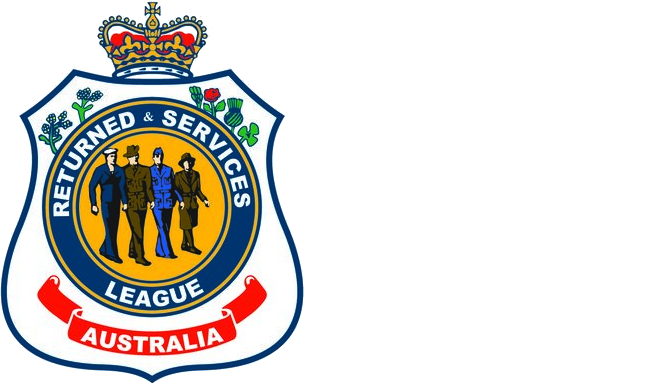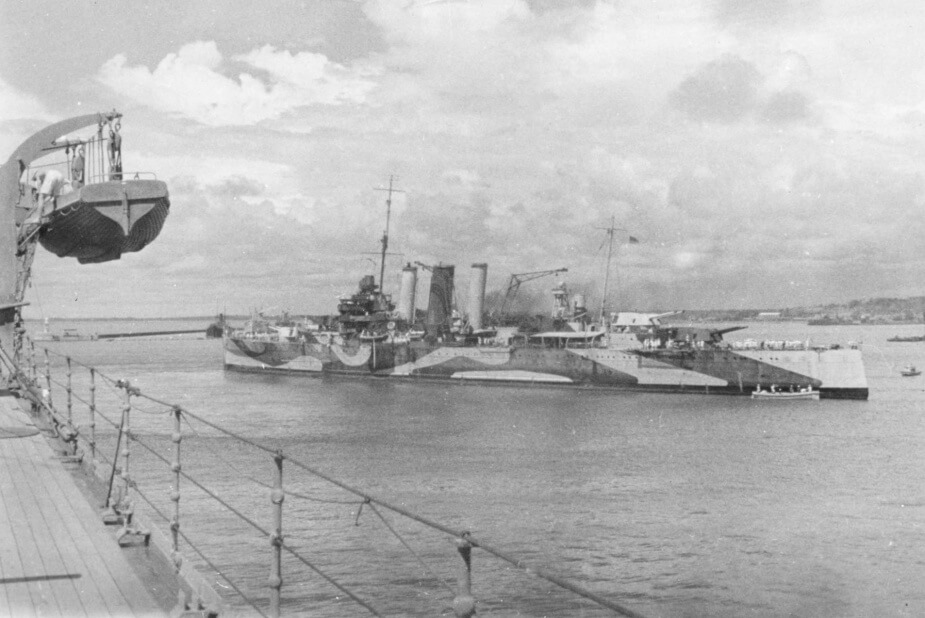HMAS Australia (II)
HMAS Australia (II)
HMAS Australia and HMAS Canberra were two 10,000 ton County Class heavy cruisers ordered by the Australian Government as part of a five year naval development program begun in 1924 and completed in 1929. She served in numerous deployments until she paid off into Reserve on 24 April 1938.
With war approaching HMAS Australia recommissioned at Sydney on 28 August 1939 and the first nine months of World War II were spent on the Australian coast and on one occasion she investigated a doubtful report of an ‘unknown raider’. Between May and July 1940, she was employed on convoy escort duties, initially between Fremantle and Capetown and later between Capetown and Freetown on the African west coast.
Atlantic and Mediterranean
As part of the Dakar Squadron in July and August 1940, HMAS Australia, in company with HM Ships was patrolling off the French West African coast and fired her first shot in World War II when she was attacked by an enemy bomber. On 9 July she joined a convoy for the United Kingdom and for the rest of the month she was patrolling off Norway in the vicinity of the Faeroes with the 1st Cruiser Squadron, at one time engaged in a search for the German battleship Gneisenau. .
September 1940 found HMAS Australia involved in Operation MENACE and patrolling off Dakar, French West Africa, shadowing French cruisers. During the month HMAS Sydney HMAS Australia and the HM ships engaged and were hit by shore batteries and her Walrus spotting aircraft was shot down. HMAS Australia and the other ships attacked a French destroyer which was set ablaze from end to end. They were twice subjected to high level bombing attacks by French planes. .
In October 1940 HMAS Australia was patrolling off the Azores and escorting troop ships between Gibraltar and the United Kingdom. On 29 October, in the Orkney/Shetland area, Australia (II) succeeded in rescuing nine crew members of a Sunderland Flying Boat, despite Force 10 winds and very high seas. .
The remainder of 1940 was spent docked in Liverpool for a refit and subjected in December to a period of heavy air raids which caused minor damage..
Back to the Pacific
With the entry of Japan into the war HMAS Australia escorted convoys to Freetown, Durban, Suez and Colombo and finally arrived back in Sydney on 24 March 1941. Between April and November, the ship was on duty in the Indian Ocean and on 6 November carried out a reconnaissance of the Crozet Islands. She returned to Sydney in December and became Flagship of the Australian Squadron and two months later, in February 1942, Flagship of ANZAC Squadron, having Noumea as its operational base.
In March and April 1942 HMAS Australia operated in the South West Pacific in support of United States naval forces attempting to halt further Japanese southward expansion. On 22 April the Naval Command in the South West Pacific Area was reorganised HMAS Australia took command of Task Force 44 and her command expanded to lead part of Task Force 17 on 5 May.
The Battle of the Coral Sea (7 May 1942) saw HMAS Australia as Flagship of a Support Group attacking enemy transports and light cruisers reported to be heading for Port Moresby through Jomard Passage. The Support Group was attacked by eight torpedo bombers and nineteen high level bombers on this date.
On 7 August 1942 HMAS Australia led the escort of nine transports and six store ships containing the forces for the landing at Guadalcanal. She remained in the area until the end of August 1942, during which period she was subjected, with the remainder of the forces, to frequent heavy air attacks..
The early months of 1943 were spent in support of the Coral Sea Group and patrolling the east coast of Australia. .
From November 1943 to September 1944, HMAS Australia was involved in bombarding enemy held islands in the South West Pacific, prior to allied assaults, from Cape Gloucester in the New Britain area to Morotai in the Netherlands East Indies..
The Battle for Leyte Gulf.
On 20 October 1944, General MacArthur’s Philippines invasion force, comprising some 550 ships and covered by Admiral Halsey’s Third Fleet, arrived off Leyte Island in the central Philippines.
Australia’s contribution to this famous amphibious operation included Task Force 74, with HMA Ships Australia, Shropshire, Warramunga and Arunta attached to the US Seventh Fleet and smaller vessels involved with the landings..
By 09:00 on 20 October hundreds of small boats and destroyers headed for the beaches of Leyte, accompanied by a tremendous bombardment from the accompanying battleships and cruisers including HMAS Australia..
The following morning at 06:05 HMAS Australia was hit by a Japanese kamikaze suicide aircraft. Australia’s Commanding Officer and 29 other officers and ratings were killed or died of wounds and a further 65 were injured. Whether this was the first deliberate kamikaze attack on an Allied ship remains the topic of debate. .
After this action HMAS Australia went to Epiritu Santo in the New Hebrides for repairs. .
By 5 January 1945 she was back in action in the Lingayen Gulf covering the allied invasion of Luzon Island. Here she was subjected to repeated suicide attacks, this time there was no doubt of the kamikaze nature of the Japanese planes. HMAS Australia was hit on 5, 6, 8 and 9 January, losing three officers and 41 ratings killed and one officer and 68 ratings wounded. This was the ship’s last action in World War II.
After repairs in Sydney, she sailed for the United Kingdom for a major refit and was still in the United Kingdom at the end of the war.
HMAS Australia paid off for disposal on 31 August 1954, having steamed 477,301 miles in the period since August 1939.

